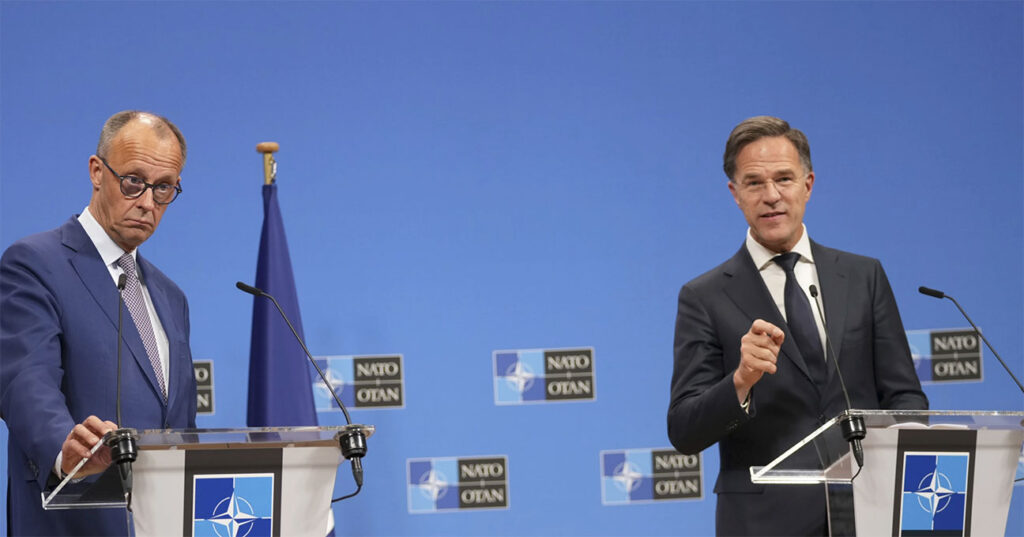German Chancellor Freidrich Merz, left, and NATO General-Secretary Mark Rutte address the media at NATO headquarters in Brussels in May 2025. THE ASSOCIATED PRESS
THE ASSOCIATED PRESS
Dutch Prime Minister Dick Schoof said in May 2025 that NATO’s chief wants the 32 member countries to agree to start spending at least 3.5% of gross domestic product (GDP) on their defense budgets at a summit in the Netherlands the following month. In 2023, as the Russia-Ukraine war entered its second year, NATO leaders agreed that all allies should spend at least 2% of GDP. They are expected to set a new goal at a meeting in The Hague on June 25.
Schoof told reporters that NATO Secretary-General Mark Rutte has written to the member nations to tell them that “he expects the NATO summit to aim for 3.5% hard military spending by 2032.” Rutte also wrote that he expects a commitment of another 1.5% related to spending on “infrastructure, cybersecurity and things like that. Also achievable by 2032,” Schoof said.
While the two figures do add up to 5%, factoring in infrastructure and cybersecurity would change the basis on which NATO calculates defense spending. The seven-year time frame is also short by the alliance’s usual standards.
Asked at NATO’s Brussels headquarters about his demand, Rutte said: “I’m not going to confirm the figures.” He said that “there are many rumors floating around” as NATO envoys discuss the new spending goal. NATO foreign ministers are likely to debate the numbers again at a meeting in Antalya, Turkey, later in May.
Rutte reaffirmed his public position that “if we stick at the 2%, we cannot defend ourselves. So we have to really increase defense spending.” Standing alongside Rutte, Chancellor Friedrich Merz said that for Germany currently, each 1% of GDP represents around 45 billion euros ($51 billion). Germany was estimated to have spent 2.1% on its military budget last year, according to NATO figures.
But Merz said that NATO allies “also need to discuss infrastructure as well,” including civilian infrastructure — roads, bridges, air and seaports — so that armies can move more quickly around Europe, and not just pure military spending.
It remains difficult to see how many allies might reach even 3.5%. NATO’s most recent estimates show that 22 allies would reach the 2% goal last year, compared to a previous forecast of 23.
Belgium, Canada, Croatia, Italy, Luxembourg, Montenegro, Portugal, Slovenia and Spain would not, although Spain does expect to reach the 2% goal in 2025.

